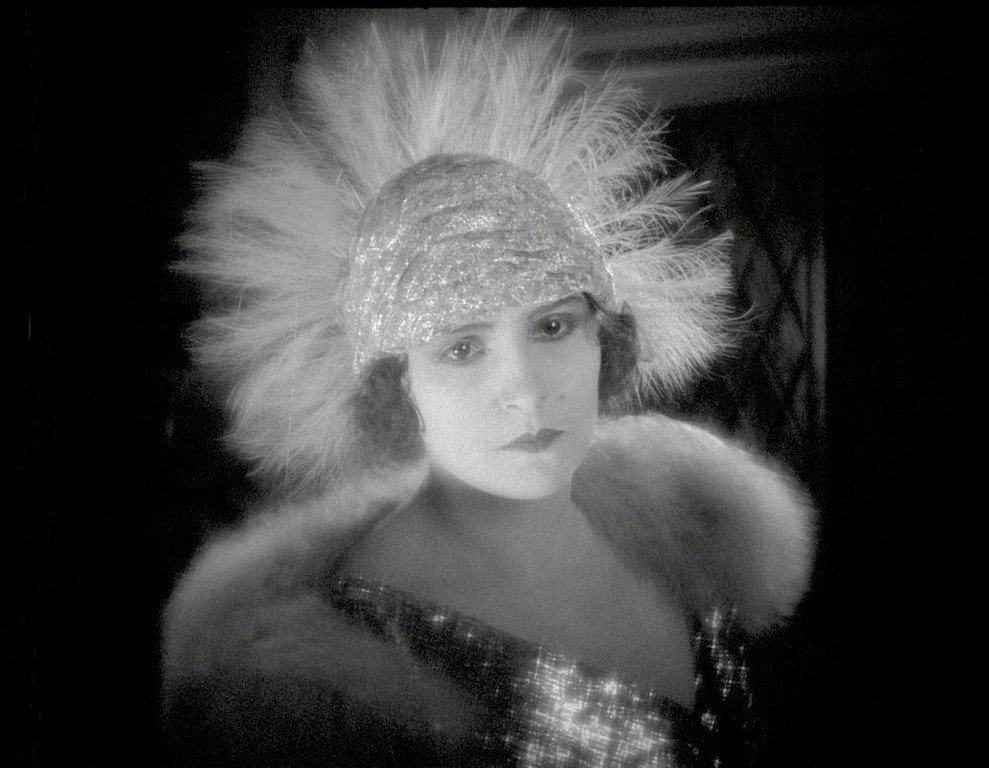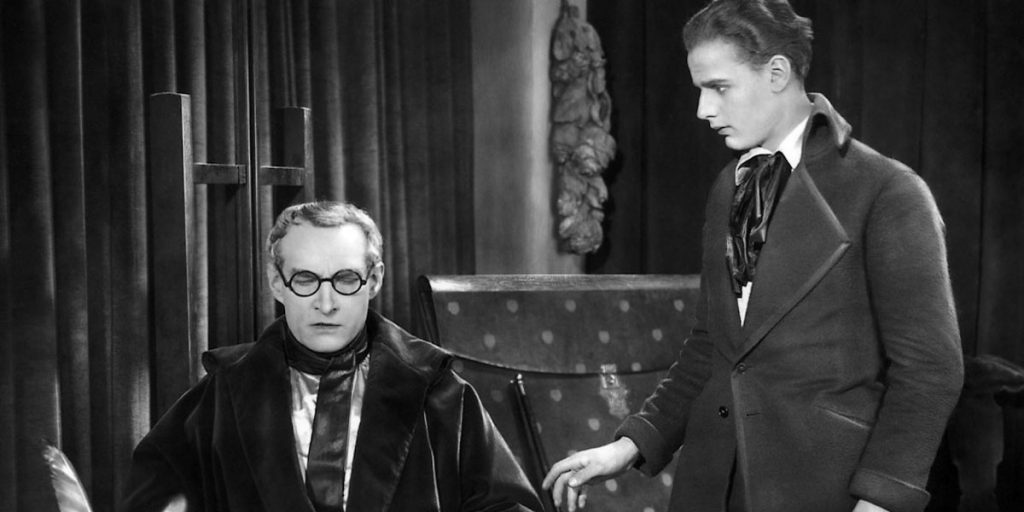Carl Theodor Dreyer’s Michael is a staggeringly sensitive portrayal of queer love and a historically progressive and vulnerable feature.
Carl Theodor Dreyer’s Michael (1924), is a part of a suite of films, including Leontine Sagan’s 1931 film, Mädchen in Uniform, and Reinhold Schünzel’s 1933 musical, Victor and Victoria, that has been excellently remastered and about to be made available through Kino Lorber’s “Pioneers of Queer Cinema” screenings event. And while Michael is one of his earlier works, Dreyer’s film exudes confident, commanding maturity. Intermingling bittersweet reflections on consuming, untainted love with the unfortunate pitfalls of greed, naivety, and idolization, Michael excels at evoking and testing one’s sympathy for its troubled characters.
Michael (Walter Slezak) himself is the emotionally opaque model and adopted son to the stoically introverted and highly esteemed painter, Claude Zoret (Benjamin Christensen). Their relationship is one of staunchly guarded and, at times unequally conveyed, homosexual love. Zoret (often referred to as “The Master”) hides his infatuation behind the façade of intellectualism and artistic inspiration, while Michael revels in the attention that being Zoret’s truest inspiration allots him. When they first encounter each other, Zoret readily dismisses Michael’s paintings themselves, but quickly pivots into his unmatched desire to paint Michael. In turn, they fall into a passionate rhythm of art production, with Michael’s pride satiated by the gravity of Zoret’s obsessions with him.
As expected of Dreyer, he instills within his lovers a deeply somber loneliness. Zoret’s pain is mitigated by the lauding critics and the waning affirmations of his staff. Of Zoret’s staff, it’s evident that the journalist, Charles Switt (Robert Garrison), also feels romantically for The Master and in a truest form of pained understanding, does not interfere with Michael’s turbulent relationship with Zoret. Michael largely appears less afflicted than others, likely a product of his youthful impulsiveness and understandings of love. Yet, as Michael wears down under the burden of a publicly unrequited love from Zoret (both fatherly and romantically), his ache for personal, social, and romantic validation, as well as his assumed wealth, is preyed upon by the bankrupt Countess Lucia Zamikow (Nora Gregor). Michael, now clouded and goaded by Zamikow, tests Zoret’s financial support and spirit, stealing sketches, money, and most of all, tainting Zoret’s art that channeled their love so vehemently. Earlier, on a visit from a prospective customer, Zoret explains to Michael the sheer, representative weight of their art, “we are not going to sell our most precious memories, are we?”, thus giving Michael’s ultimate sale of their work even more transgressive and disrespectful symbolism.

Far from using the art as mere set dressing, Dreyer embellishes and conveys his film through the expressionism of Zoret’s paintings and decorative art, ingraining within them the subtle implications of Michael and Zoret’s complicated relationship. It’s in the passing of a nude statue between strangers that Dreyer insinuates the growth of lust, and within Zoret’s announcement of his upcoming work “Brutus and Caesar” (in which, Dreyer intentionally hides which historic figure Zoret chooses to paint Michael as) that Dreyer imitates Zoret’s betrayal.
In frame, Dreyer’s lens fluctuates gracefully between expansive wide shots and strikingly intimate close-ups. The widest of Dreyer’s shots nearly lose their humanity amongst the cluttered detail and opulence of a high-life artists’ home. Yet, Dreyer has always excelled in his impassioned closeups. In particular, Zoret’s chiseled and furrowed face dominates these sequences with unmatched intensity, his scowl harsh and brutally pained in a way that only an artist can hurt. Kino Lorber’s restoration beckons even more out of Dreyer’s iconic close-ups; one can see with clarity the twitch and tremble of Zoret’s eyebrows. The exposed detail highlighting with greater fervor how impossibly smooth Michael’s face truly is. Much like Zoret’s own perfectionist obsession with finishing the eyes of a painting, Dreyer is similarly obsessed with the details, and the symbolic breadth that the eyes can convey.
And yet, for as richly and artfully occupied as its locations are, as cinematically progressive as its intimate closeups remain, and as empathetically as it treats its characters, Michael still struggles within its subtly towards its queer themes. To be clear, Michael is inseparably about the tribulations of queer love, and, was created within a historic period that had little tolerance for its secretive intentions. However, in today’s context, its story feels unfortunately less provocative. The power dynamics between Michael and Zoret are only marginally explored, summarized best by Michael’s aggressive outburst that he will no longer be a “tool for [Zoret] to achieve fame”. Michael, through little fault of its own, is caught in its inability to parse and characterize Zoret’s love for Michael as either fatherly or romantically, lending the edges of the material an uneasy sense of regrettable silence. The compounding complexity of each character’s respective age gap, paternal relationship, and romantic involvement is too heavy a burden for Dreyer to convey only in subtle gestures. Not to mention, its closes with a predictably trite and dour ending that often characterizes and befalls early queer cinema.
Taken in its broadest gestures of bittersweet romance, Michael is decidedly adequate. So, it’s an even rarer feat then, that for a work of silent cinema, Michael should most aptly be remembered for its inscrutable and idiosyncratic details. Dreyer locates and expresses his lover’s pains with exceptional precision: Zoret’s assured hand, lovingly and confidently clasping the back of Michael’s head. The mournful heartbreak in the eyes of a “pained painter”, who’s gloriously morose debut is attended by all but the one he so desperately needs. And lastly, the welcomed presence of death, gracefully shown within the shadows cast on Zoret’s deathbed.
For such an early work, and even earlier examination of queer love, Michael is eternally, fiercely, and thankfully defensive of its character’s longings. Here are men who have suffered tremendously for their quiet love, and whether or not it ultimately betters them or positively inspires them is empathetically besides Dreyer’s point. For only a glimpse of the limitless depth of this love is enough for one to die happily; “I can die in peace now, since I have seen true love”.
Gorgeous new restorations of three classics of early queer cinema – Michael, Mädchen in Uniform and Victor and Victoria – will open in virtual cinemas across the U.S. on June 12th.

